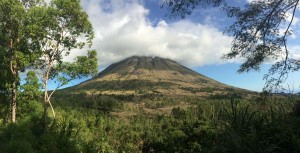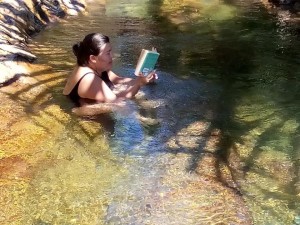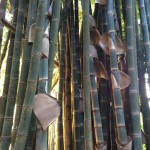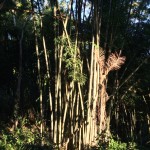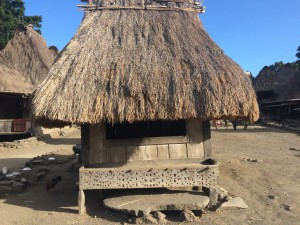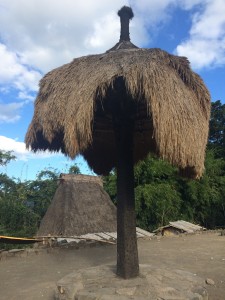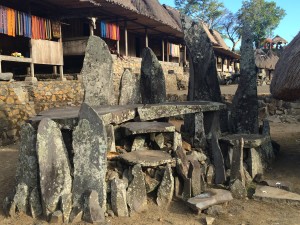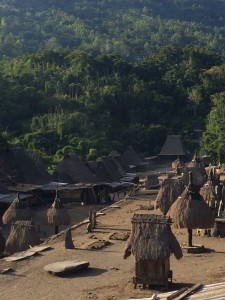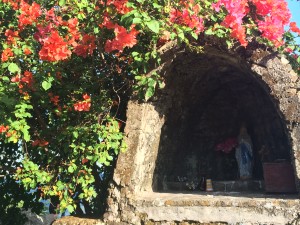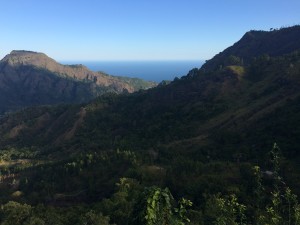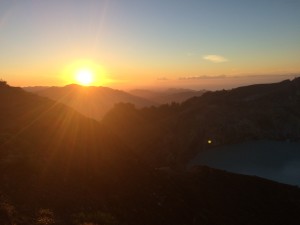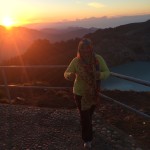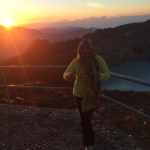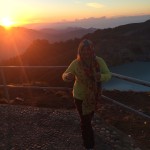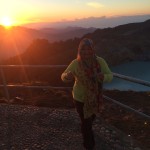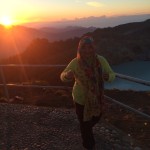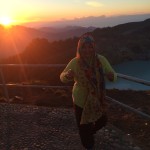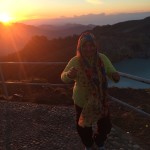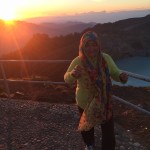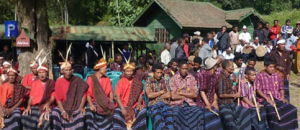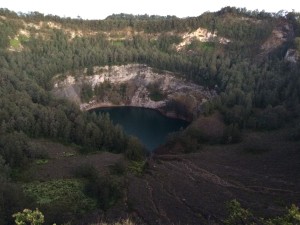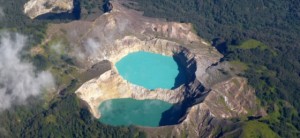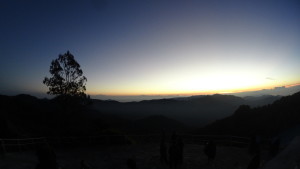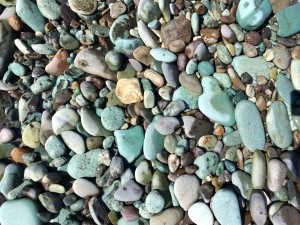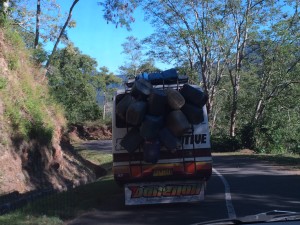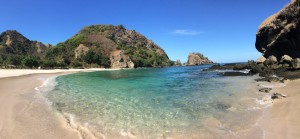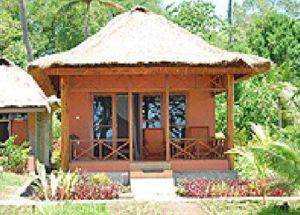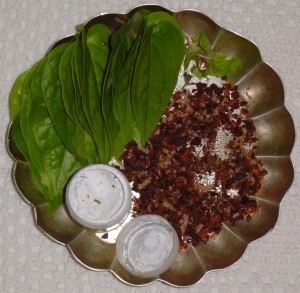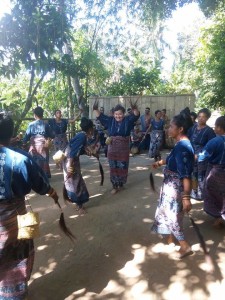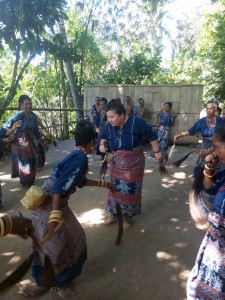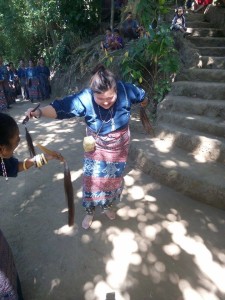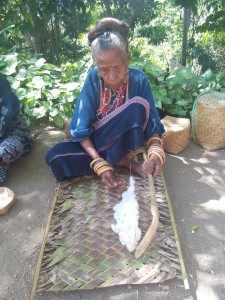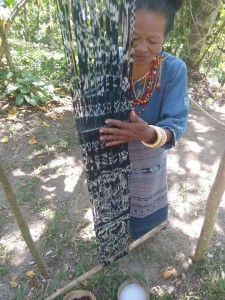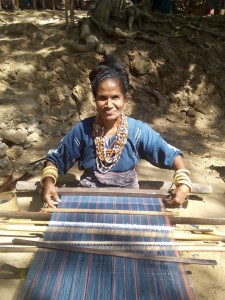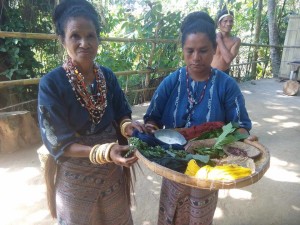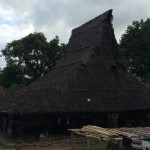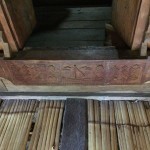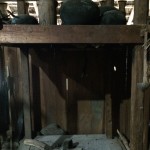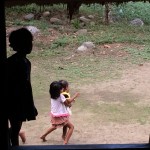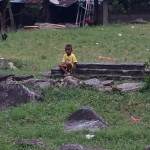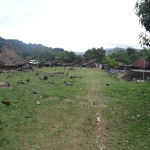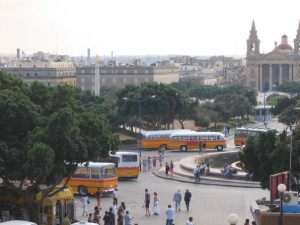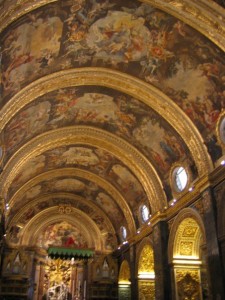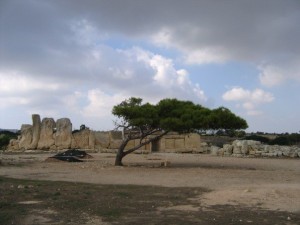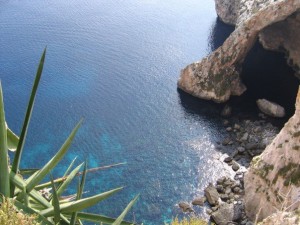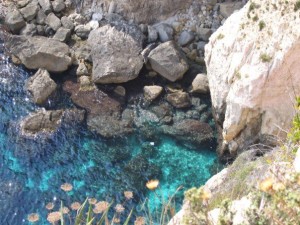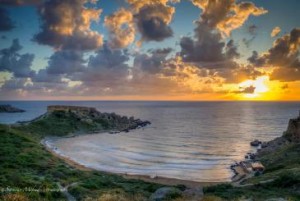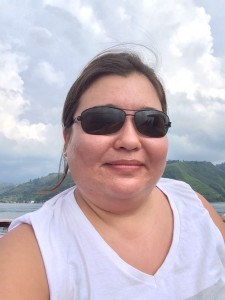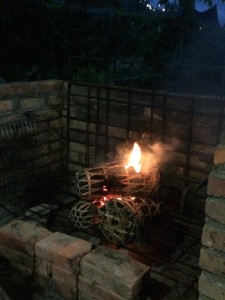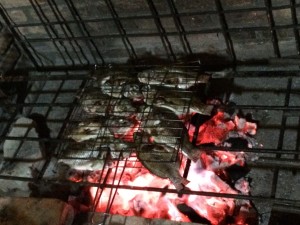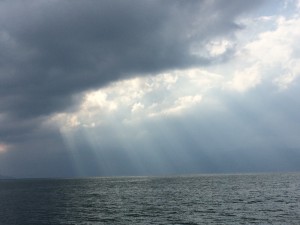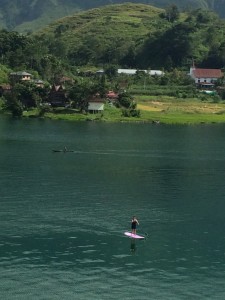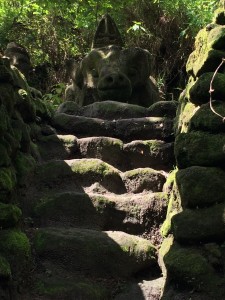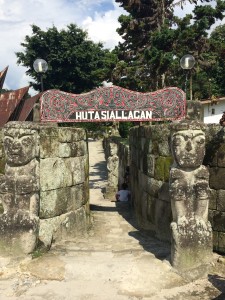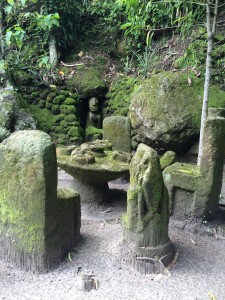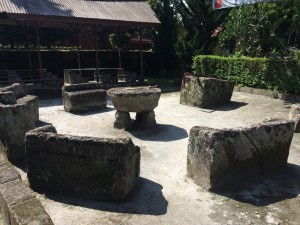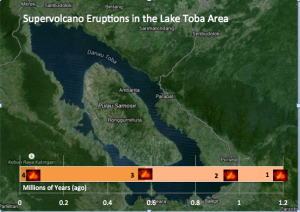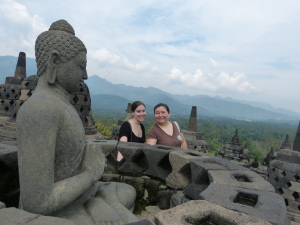Flores is my Indonesia swan song – my last major trip in the archipelago nation before heading back to the U.S. I’m just barely staying true to Weekend Crossroad’s philosophy, as between its immense size and still developing infrastructure, Flores requires considerably more a long weekend to explore properly. However, those with time constraints can always choose a couple of highlights to enjoy, as illustrated in the following multi-part Flores series. Alternatively, one can choose to take an 8-10 day overland trip from Maumere to Labuan Bajo, which covers roughly two-thirds of the island.
This is Part One of Eight.
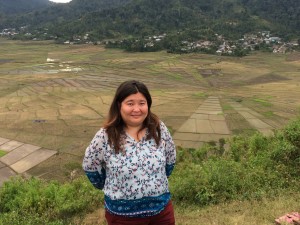
Flores’s iconic Manggarai spider web rice paddies in Cancar Village outside of Ruteng. Having hit them just after harvest time, they are a bit brown and barren — but remarkable all the same. The unique layout stems from an ancient system of subdividing ancestral plots, ensuring equality and even more importantly, fair access to scarce water for irrigation.
Information about traveling to Flores is surprisingly scant compared with that on other popular destinations in Indonesia, and as such, I’ve included more “helpful information” information here than in most other Weekend Crossroad posts which concentrate more on itineraries and stories
Flores for me was a land of interesting opposites. Hot days and cold nights, arid moonscapes and lush tropical forests, and bright sunlit plains and mist-shrouded mountains. The island has had many evocative names throughout history, beginning with a local word for snake, derived from the island’s shape and its winding roads, and ending today with a shortened form of Cabo Das Flores, or Cape of Flowers, commemorating the initial impressions of 16th century Portuguese spice traders. Even today, many names bear witness to the island’s colonial history. Ende, for example, is a bastardization of the Dutch word Einde, as the town once demarcated the easternmost boundary of the Dutch-controlled western part of Flores.
East Nusa Tenggara province, of which Flores forms a part, is one of Indonesia’s poorest regions. Offering very few economic opportunities aside from fishing/subsistence farming and tourism, Flores is definitely among the poorest of the poor. The few cash crops of coffee, cocoa, cloves, vanilla, and cashews are shipped out in raw form, with almost no processing facilities on the island to add greater value and increase economic gains. Many families cannot even afford basic school fees, and one is immediately struck by the number of idle young men and joyfully scampering children hanging out in the streets, not to mention the plethora of graffiti (some of which is quite, er, colorful. . .)
Due to Portuguese colonialism, East Nusa Tenggara is the only predominantly Catholic province in Indonesia. Flores itself is 85% Roman Catholic, with the remaining Muslim minority originally hailing from Sumba and Sulawesi and primarily settled along the coastline. Indeed, if training missionaries were an economic activity, this would be a significant contributor to the island’s income. What I found most interesting, however, was how easily traditional beliefs (from animal sacrifice to spiritual healing) were interwoven with the newer faith systems – and how readily this was accepted all around. Is tradition the magic thread that has kept Flores as one of the few areas in Indonesia never to experience religious tensions? (A fact to which my guide frequently and proudly referred – and rightly so!)
This is especially interesting in light of the fact that Flores and its people are, by nature, divided. Anthropologists believe that the line of both active and extinct volcanoes traversing the island led to the creation of pockets of distinct cultures. Today, there are five primary ethnic/linguistic groups in Flores, unified by the national language of Bahasa Indonesia. In my 10-day journey, I was fortunate to interact with four of these groups:
- the Manggarai (West Flores)
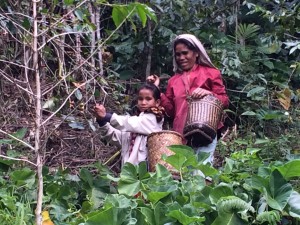
Woman and child pick coffee on a plantation in Wae Rebo Village.
Best known for their striking spider rice paddies (which can still be found near Ruteng), the Manggarai maintain a strong focus on unity, which is reflected in everything from their circular architecture and village layout to strong, enduring clan bonds. The Manggarai believe that their ancestors hailed from Sumatra.
- the Ngada (Bajawa and environs)
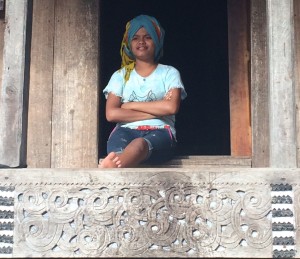
A woman watches passers by in Bena Village.
Unlike most social groups in Indonesia, the Ngada are matrilineal, meaning that children are considered to be members of their mother’s clan. Ancient Ngada society was organized according to strict hierarchical classes, and their village houses are set up in two parallel lines.
- the Lio (Ende and environs)
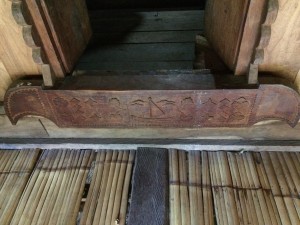
Boat motif at the entrance of the house of of the mosalaki, or clan leader.
The Lio remain some of Flores’ most spiritual / superstitious people, with a strong belief in good and bad spirits, and a vibrant afterlife. (Today, these practices have been incorporated into broader Muslim / Catholic beliefs.) Believing that their ancestors hailed from India, the Lio prominently feature boat symbols in their architecture and weaving to commemorate their long journey.
- the Sikka (Maumere, Central Flores)
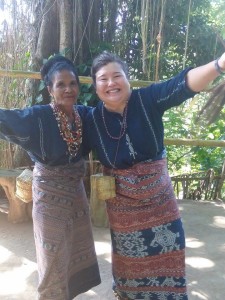
Karolina, a Watublapi village elder, inducts me into the ways of her people, dressing me in the traditional outfit for a middle-aged woman.
Renowned for their intricate ikat weaving (I definitely fell under the spell and walked out of Watublapi Village with more than I entered with!), the Sikka today are divided into two main groups – the Tana ‘Ai and the Sikka-Krowe, through historically they were much more loosely structured than other ethnic groups in Flores. The Sikka-Krowe historically had the most interaction with foreign, er, visitors? invaders? conquerors? and were among the earliest people to convert to Catholicism under the Portuguese.
TRAVEL TIPS
How to Get There
 Denpasar Bali’s Nugrah Rai Airport is probably the easiest launching point for Flores, where tiny propeller planes (often on rather dubious budget airlines) land several times a day in both Labuan Bajo (1 hour flight) and Maumere (1 hour 45 minutes flight). As of this writing, Garuda also offers limited flights to Labuan Bajo, but at a significantly steeper cost. Intra island flights also stop at Ende, Bajawa, Ruteng and Larantuka.
Denpasar Bali’s Nugrah Rai Airport is probably the easiest launching point for Flores, where tiny propeller planes (often on rather dubious budget airlines) land several times a day in both Labuan Bajo (1 hour flight) and Maumere (1 hour 45 minutes flight). As of this writing, Garuda also offers limited flights to Labuan Bajo, but at a significantly steeper cost. Intra island flights also stop at Ende, Bajawa, Ruteng and Larantuka.
 A number of operators offer tourist boat trips to Flores from Bali and Lombok. It is critical to go with a recommended provider as some boats have dubious safety records and don’t even have basic equipment like life jackets or radios.
A number of operators offer tourist boat trips to Flores from Bali and Lombok. It is critical to go with a recommended provider as some boats have dubious safety records and don’t even have basic equipment like life jackets or radios.

 Those seeking a real adventure can take a 2-3 day bus/ferry trip from Bali to Labuan Bajo, but this is not a recommended option – particularly when the seas are choppy.
Those seeking a real adventure can take a 2-3 day bus/ferry trip from Bali to Labuan Bajo, but this is not a recommended option – particularly when the seas are choppy.
When to Go
Given the generally poor state of infrastructure and the significant amount of trekking required to reach some of the island’s most stunning attractions, travel during the dry season (April-October) is typically best. Note that those traveling towards the end of the season will be greeted with an arid, almost desert-like climate/atmosphere and a lot of dust!
What to Bring (besides the obvious!)
- Cash You can easily stock up at ATMs/money changers in larger towns like Labuan Bajo, Maumere, Ende and Ruteng – however, smaller towns often don’t have ATMs that accept international cards, and outside of Labuan Bajo it is nearly impossible to use a credit or debit card for purchases. Even if you’re on an “all inclusive” package, extra cash for souvenirs and additional food and beverages is always good to have on hand.
- Warm Clothing (waterproof jacket, sweatshirts/sweaters, and long pants) Having been lulled into a false sense of complacency by other so-called “cold places” I’ve visited in Indonesia (Mount Bromo, Lake Toba, etc.) where I definitely overpacked/dressed, I was dismayed to realize just how cold some parts of Flores can get at night. (I could even see my breath in Bajawa, whose temperatures sank to a less-than-balmy 11 degrees centigrade at night.)
- Extra Clothing and/or Items That Dry Quickly I generally advocate travelling light. In Flores, however, unless you’re lucky enough to travel at a leisurely pace, you will likely not stay more than a night at any destination. With many stops dropping to practically frigid temperatures, you will not have adequate time to dry your laundry before taking off. And between high temperatures during the day and creepy-crawlies at night, trust me that you will want to change your clothing frequently!
- Camping-esque Supplies For long stretches of time, you will find yourself in a literal wilderness without easy access to food, potable water, electricity, and phone/data signal. Not to mention toilets. A good guide will pace your stops out for supply runs of food and snacks (and bathroom breaks!), and in my experience this is one instance where it is better to overestimate your need for drinking water than underestimate. Toilet paper/tissues/wet wipes also come in extremely handy (though traveling anywhere in Asia this should be a given!) Most hotels do not offer shampoo, and some don’t even offer soap, meaning that a toiletry kit is essential. A “power bank” for charging electronics on long electricity-less stretches plus a car adapter for mobile phone charging can be a godsend. And a flashlight is essential for navigating unlit roads/paths, as well as reading after the electricity generators are shut off at 10pm aboard boats and in more remote locations such as Wae Rebo.
- A Sarong and/or Towel (or pick one up along the way) If you are really going off the beaten path and staying one of the many traditional villages which offer rustic homestay options, you may find yourself faced with communal or open bathing situations where modesty coverings are a must. I also recommend packing more than one swim suit – again due to the slow drying time – as it is especially nasty (in my opinion) to squelch around in a wet bathing suit.
- Entertainment Happily I had downloaded a bunch of podcasts and TV shows prior to leaving Jakarta, and brought along three books, which I continuously swapped out at various tourists stops along the way when I had finished reading them. There is a LOT of down time in Flores – not a bad thing in the slightest – but unlike other areas, with no book stores and weak wifi signals (assuming wifi is available at all), you’re basically stuck with what you bring. Zoning out to my favorite music and NPR’s “Wait Wait Don’t Tell Me” helped me deal with the worst of both car and sea sickness (though happily for the most parts the waters were extremely calm.)
Getting Around:
- Allow Extra Time Cushions
One of the most challenging things to do is to determine how long it will take to get from Point A to Point B. Any GPS-based map or navigation estimate is completely useless as it will fail to take into account the state of some of the more remote roads, the extra distance required to snake one’s way across winding mountain roads, the reality that landslides can cause sudden road closures, and the fact that you will frequently have to slow down to a crawl whenever two vehicles are simultaneously navigating the narrow roads.
- Consider Hiring the Same Guide and/or Driver for the Length of your Stay
While I typically avoid tour operators like the plague, travelling solo in Flores, it seemed to me to be the most practical option. On the road (literally!) I met numerous adventurous types braving the treacherous, steep, pitted and curving mountain roads on scooter, as well as a few even braver souls endeavoring to make the journey by bus. But no other solo travellers. Most people, even more seasoned adventure travelers, elected to go the same route as I. It was definitely considerably more expensive to have both a guide and a driver, but worth it for the hassles and headaches I saved. It was also nice being able to set my own pace (quite literally on the 10 km uphill trek to Wae Rebo village!) and make last minute itinerary changes based on my interests or external environmental factors.
- Navigate Labuan Bajo on Your Own
In Labuan Bajo, if you are not staying in the city center, it is easy enough to flag down a car or a motorcycle for a quick local ride, or to arrange a driver for day / overnight trips. Most hotels also offer free rides to the airport. Maumere, Bajawa and other “major” cities have local drivers willing to negotiate a set fee for day trips, as well as motorbike rental.
Those hoping to rent a motorbike in Labuan Bajo for their self-guided overland adventure should know that only experienced bikers should take this option – and never ride alone. Also, due to a rising incidence of tourists abandoning their rented bikes (e.g., leaving them in Maumere rather than returning them to Labuan Bajo), there are fewer and fewer rental places, and those that remain can often have a waiting list for days. (Even the best plans are frequently waylaid in Flores, so rental operators seldom ask for a fixed “return by” date.) Prices also seem to change at random – one place offering motorbikes for IDR 50,000/day one week would accept no less than IDR 65,000 the next. Finally, note that a 100 cc engine is fine for local joyriding but will not be able to handle the steep mountain roads. Gas stations can be oddly spaced out, but little mom and pop operations sell gas by the liter out of old mineral water bottles. (Note that some less scrupulous vendors have been known to mix water into the petrol – never a pleasant outcome.) While road signs are abysmal to non-existent –the locals are very friendly and welcoming and generally will point you in (roughly) the right direction.
Food: A Resounding “Meh”
With visions of Macanese-style Portuguese-Chinese fusion cuisine in mind (to this day I firmly believe that the pork chop bun is one of the best snacks of all time), I was eager to sample the delights of Flores cuisine, which I imagined to be the best of Indonesia, Portugal, and Holland on a plate. And, I was soon disavowed of this notion. In Flores, I consumed some of the least palatable food I’ve eaten in all of Indonesia. Didn’t think it was possible to mess up nasi goreng? Neither did I. Until I came to Flores. Bafflingly, few of the restaurants deemed hygienic enough for tourists serve local fare – instead they offer various takes on the same tired menus – fried rice, fried noodles, fried chicken and pseudo-Chinese style seafood and vegetable dishes. The notable exception was Lucas Café, a restaurant in Bajawa where I gluttonously devoured pork satay and mixed tofu and tempe in fresh tomato sauce – both local specialties that were absolutely delicious.
The best local food I had outside of Lucas Café was in the most unexpected places – a fresh fish grill on one of the 17 Islands, simple home-cooked fare on my overnight Komodo/Rinca boat, and a simple but tasty communal village meal in Wae Rebo.
By the time I arrived in Labuan Bajo I was ecstatic to discover some of the best pizza I’ve eaten in Indonesia at the aptly-named MadeInItaly, and a lovely barracuda carpaccio at its neighbor and rival, Mediterraneo. After a week of drinking instant coffee – an unforgivable sin in my book in one of Indonesia’s most renowned coffee-growing regions – I was almost brought to tears upon stumbling into Café In Hit, which offers not only first rate espresso-based drinks, but even more importantly, a free book exchange which serves as my lifeline as I found myself stranded for 3 additional days due to the unexpected eruption of Mount Raung in East Java and resulting airport closures. I even managed to find a decent burger (my best cure for homesickness) at the Lounge and enjoy coffee with a view at Cucina. (Having this unexpectedly elongated stay in Labuan Bajo, I had ample time to eat my way through the small downtown strip!)
Accommodation: “Expensively Rustic”
Having stayed at perfectly lovely hotels across Java for less than US$30/night – we’re talking clean linens, a/c, hot water, the works – I experienced significant sticker shock in Flores. This was not too big a deal, until I found myself faced with the prospect of being stuck in Labuan Bajo for an unplanned (and unbudgeted!) extended stay due to flight cancellations across the entire region (East Java, Bali, Lombok, and Flores). Thanks for nothing, Mount Raung! You just HAD to erupt now. . . I managed to plead my 3 star hotel in Labuan Bajo down to IDR 700.000 a night (half the rack rate), but still could feel the dollar signs adding up. Though pricey, at least these accommodations were pleasant.
Elsewhere in Flores, I found myself facing cold water showers even in frigid temperatures, and being eaten alive by mosquitoes. Riung was the worst of the lot. (Well, I guess technically Wae Rebo was worse – but it was so charming that nobody cared!) But with the right expectations and a good sense of adventure, it’s still an unforgettable journey. And most travelers recommend ending your journey in Labuan Bajo, where decent (if pricey) lodging and good food abound.
But when all is said and done, you most certainly have an unforgettable trip ahead of you – and I highly recommend the journey. More details on specific destinations in Flores to follow soon!
Continue on to part two here.
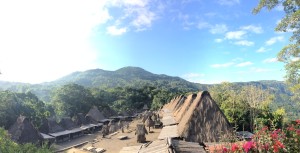
 Unlike most social groups in Indonesia, the Ngada are matrilineal, meaning that children are considered to be members of their mother’s clan – and houses are bequeathed accordingly. Ancient Ngada society was organized according to strict hierarchical classes – nobility, warriors and slaves.
Unlike most social groups in Indonesia, the Ngada are matrilineal, meaning that children are considered to be members of their mother’s clan – and houses are bequeathed accordingly. Ancient Ngada society was organized according to strict hierarchical classes – nobility, warriors and slaves.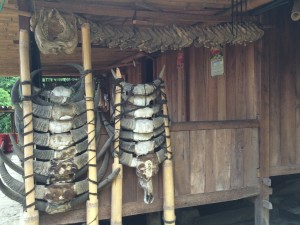
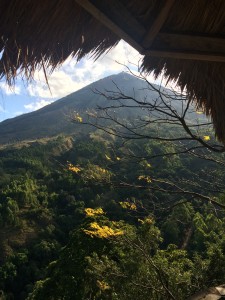 The final stop is a small hill which offers a beautiful panoramic vista of Bena Village, Mount Inerie, and the volcanic valleys leading to the Savu Sea. It is crowded with local visitor, but I still found unobstructed vantage points from which to snap photos.
The final stop is a small hill which offers a beautiful panoramic vista of Bena Village, Mount Inerie, and the volcanic valleys leading to the Savu Sea. It is crowded with local visitor, but I still found unobstructed vantage points from which to snap photos.






